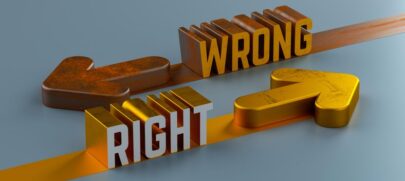New business owners sometimes get confused about the difference between profits and revenues, even if they know the definitions of both words.
Here’s the basic explanation, to be sure we’re all on the same page.
You sell items that cost $10.00. Keeping the doors open – paying staff wages, rent, the electric bill, your marketing fees, and all other fixed costs – runs you an amazingly low $100 a day.
When you sell 10 of your items at $10.00 each, your revenue is equal to your costs.
However, you didn’t break even. The item has some cost – in this case, let’s imagine that it costs you $5.00 to make or buy the item. That means that each item, while it put a $10.00 bill in the cash register, only earns you $5.00. You must sell 20 items to break even each day.
If you sell 20 of your $10 items and take in $200.00, how much profit have you made?
None. You’ve covered your costs, but you have not made any profit. The 21st item you sell each day earns you $5.00 in profit.
It takes businesses some time to become profitable. Three to five years on average, in fact. Costs are nearly always higher than $100 a day, and your items may not be priced as high as $10.00 or have as high a markup as $5.00.
Sometimes business owners – franchisees or not – can get very focused on revenue and forget about profits. If you don’t keep close track of your costs, you can end up with plenty of revenue and no profit. To continue with our example, you might run a special buy one get one free promotion that brought lots of extra people into your shop and sell 60 items one day.
Let’s see how that works out:
• You gave 30 of the items away for free, so you took in $300.00.
• Your cost for 60 items is $300 ($5 x 60 =$300).
• Your fixed costs for the day were $100.
So you took in $300, which means your revenue was higher than on the day you sold 20 items. However, your costs were $400, so you actually lost money rather than earning anything on that day.
That’s fine if your special offer causes half those customers to come back three times a week and buy several of your items… but you can’t always predict the effects of the promotion before you spend. Being too cautious can keep you from growing to profitability, but being incautious can just eat up the profits.
As long as we work with small, round numbers, it’s pretty easy to see that revenue and profit are not the same thing. In real life, it’s not that simple. Costs come up in large, uneven numbers on different days and at different intervals. Items have different prices and different markups, and you have to make decisions on the fly.
All these things are true in every business. In a franchise business, however, you may pay a percentage of your revenue to your franchisor.
Not a percentage of the profits, but a percentage of the revenue.
Sometimes that can mean that the franchise may want to do things that increase revenue but don’t increase profits. Several fast food restaurants, for example, have gotten into disagreements with franchisees because they want to offer coupons and $1.00 deals. Those are perfect examples of promotions that raise revenues while reducing profits. The franchisors believe – on the basis of long experience – that the long term benefits are worth the short term investment. The franchisees aren’t so sure.
There’s no hard and fast rule, but having a clear understanding of the difference between revenue and profit can make your research into a franchise much more effective.



